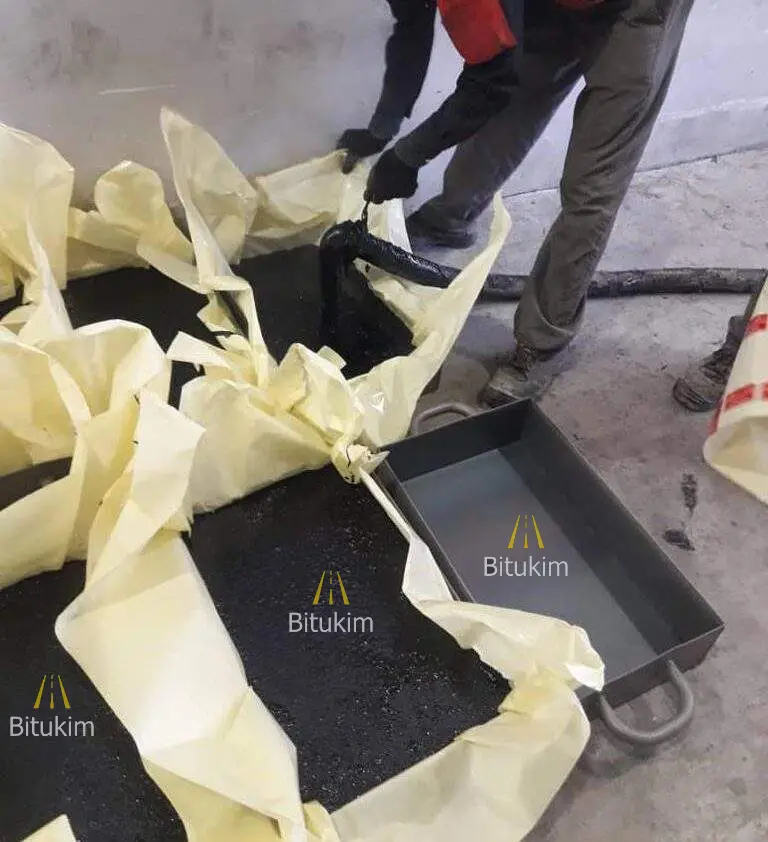
Oxidized Bitumen 105/35 is a specific type of bitumen, a semi-solid form of petroleum, that has undergone an oxidation process. This process enhances the thermal sensitivity, consistency, softening point, and resistance to water, making it a versatile and durable material for construction and industrial applications.
What is Oxidized Bitumen 105/35?
Oxidized Bitumen 105/35 is oxidized bitumen that has been altered by being subjected to a controlled oxidation. The oxidation process raises the softening point of the bitumen, making it more heat-resistant and tougher. It is widely used in roofing and construction applications because of its superior bonding and weathering properties. The product is also known for providing long-term protection and enhanced performance in a wide range of applications, particularly where extreme weather and high thermal resistance are essential.
Key Features of Oxidized Bitumen 105/35
Softening Point: Around 105°C, this feature helps prevent the bitumen from easily degrading or softening when subjected to extreme temperatures.
Penetration Grade: With a penetration grade of 35, it possesses the optimum consistency for different uses, with a balance between fluidity and hardness.
These critical properties make Oxidized Bitumen 105/35 suitable for uses where durability, temperature resistance, and good adhesion are required. Its performance in roofing, waterproofing, and road construction uses is unmatched.
Applications of Oxidized Bitumen 105/35
Oxidized Bitumen 105/35 is used in various industries. It is of great use in roofing applications such as bituminous membranes, where its high softening point and weather resistance position it as a top choice for longevity. It also comes in pavement sealants to protect road surfaces from weathering and wear and tear effects of traffic. It is also used in pipe coatings to prevent corrosion and prolong the life of pipelines in harsh environments.
It is also extensively utilized as a joint filler, where its high adhesive strength ensures long-term sealing and water resistance, especially in building projects where movement and expansion joints are common.
Oxidized Bitumen 105/35 Production Process
Production process of Oxidized Bitumen 105/35 involves many steps. Raw bitumen is first heated to high temperatures (typically between 240°C and 260°C). Then, the hot air is blown through the bitumen to induce oxidation, which alters its molecular composition chemically. It also increases the viscosity and softening point of the bitumen, providing it with improved performance characteristics. After that, the bitumen is filtered and cooled to eliminate impurities. Finally, stabilizers or polymers are added to provide it with strength and elasticity, before packaging and distribution.
Strengths and Weaknesses of Oxidized Bitumen 105/35
Strengths:
Better weather resistance renders it appropriate for application in extreme temperatures.
Adhesive properites give it excellent bonding, providing long-lasting seals and protection in waterproofing and roofing.
Excellent durability in heavy-duty and harsh environments, especially in roadwork and industrial applications.
Drawbacks:
It has environmental concerns because it is made using a process which requires high energy and may release pollutants.
It is more costly than regular bitumen, hence being less economical for some uses. However, its durability works to negate the cost.
Benefits of Oxidized Bitumen 105/35
Oxidized Bitumen 105/35 is highly acclaimed for its long list of benefits, especially in construction. Its thermal stability ensures it is stable even under high weather conditions. It is also characterized by its long-lasting nature that makes it the best option when there is a need for longevity and easy maintenance. Its first-class adhesion makes it the best fit for applications like waterproofing membrane, roadways, and pipeline coating, among others, to prevent leaks and corrosion.
Sample Infrastructure Projects Using Oxidized Bitumen 105/35
Oxidized Bitumen 105/35 is a key component of some of the most noted infrastructure projects in the world. For instance, it was used in the construction of Burj Khalifa in Dubai, where it assisted in foundation waterproofing to ensure the strength of the building against water infiltration. In addition, the Hong Kong-Zhuhai-Macao Bridge applied Oxidized Bitumen 105/35 as road surface binder, with resistance to continuous traffic and environmental stress. Another interesting project is the Channel Tunnel, where the bitumen was used in waterproofing and sealing work, preventing water from entering the tunnel structure.
Safety and Health of Oxidized Bitumen
Safety precautions are required while handling Oxidized Bitumen 105/35. The heating of bitumen releases fumes that are hazardous to breathe, so ventilation in the working environment should be proper. Protective gear, including heat-resistant gloves and eye protection, must be worn by the laborers to avoid burns as well as contact with hot bitumen. Fire safety measures should also be followed, as bitumen is very inflammable when heated. Proper handling and storage must be done to minimize health hazards.
Packaging of Oxidized Bitumen 105/35
Oxidized Bitumen 105/35 is available in various packages to meet various needs. It is usually packaged in polyamide bags (20 and 25 kg), carton boxes (20, 25, and 40 kg), and kraft bags (20, 25, and 40 kg). For bulk purchases, it is also available in drums (20 and 25 kg). These packages offer convenience and ease in transportation and application.
For container packing, a 20ft box can typically take:
25kg Polyamide Sacks: 920 sacks (23 Ton Net).
25kg Carton Cases: 880 cases (22 Ton Net).
Specification of Oxidized Bitumen 105/35
| Bitumen 105/35 | Test method | Unit | Specification |
|---|---|---|---|
| Specific gravity @25/25 C | ASTM D70 | (Kg/m3) | 1.05 approx. |
| Penetration @ 25°c | ASTM D5 | mm/10 | 30/40 |
| Softening point °c | ASTM D36 | °C | 100/110 |
| Loss on heating(wt) % | ASTM D6 | Wt. % | 0.2 max |
| Flashpoint c | ASTM D92 | °C | 250 min |
| Solubility is CS2(wt) % | ASTM D4 | Wt. % | 99.5 max |
| Specific gravity @25/25 C | ASTM D70 | (Kg/m3) | 1.05 approx. |

